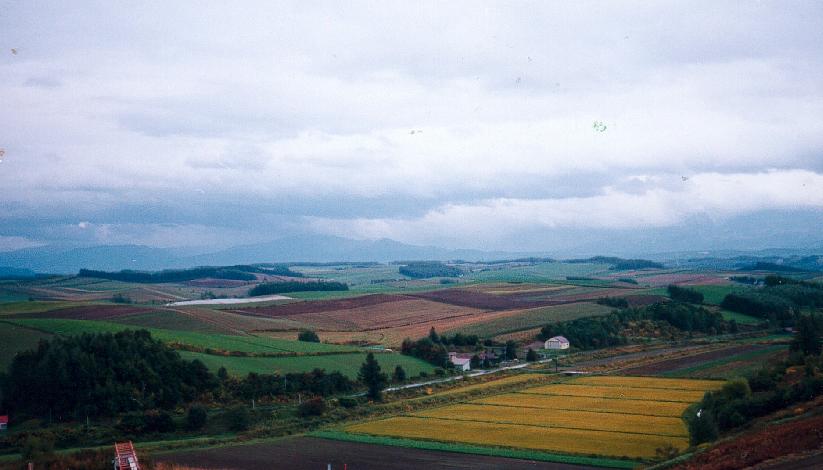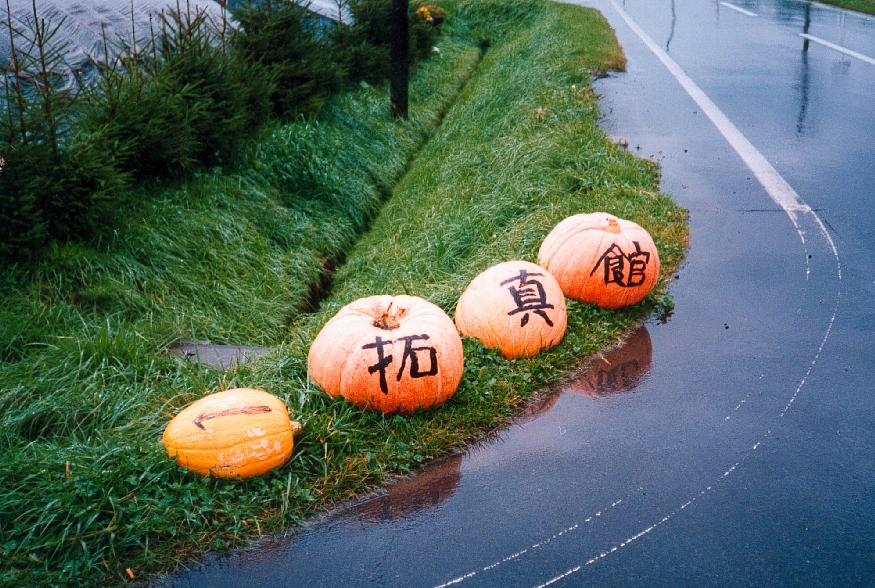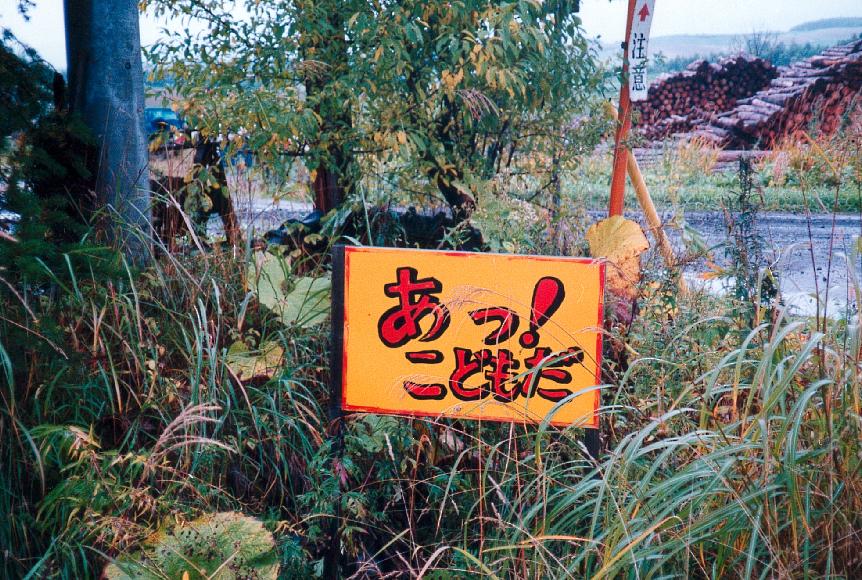As a destination, Hokkaido has a lot to recommend it. Seafood and walks in the hilly town of Hakodate; mountains in the central part of the island for skiing, for people who like that, as well as biking and hiking trails; fall foliage on par with New England or East Tennessee; dairy products on par with Wisconsin; scenic Lake Akan; a wine-making region, including a wine “castle”; and Sapporo, the only place on the island as crowded as a Honshu city, but with its charms, such as the Sapporo Beer Garden.
The foliage up in the central mountains offered vivid yellows and reds when we visited in late September and early October 1993, but green still predominated in the agricultural areas near Furano, a small city also in central Hokkaido. The terrain isn’t mountainous, but not flat either.
 The region is known for its carrots and onions and corn and lavender, as well as milk and ice cream, none of which the outside world associates with Japan. The Meiji government saw its chance to remake Hokkaido into an agricultural province in the late 19th century – they might have been a little worried that the Tsar wanted it, along with Sakhalin – and naturally hired foreign experts to get things rolling. In this case, the agriculturist William Clark of Massachusetts, who established Sapporo Agricultural College (now Hokkaido University) in the 1870s. We saw his statue at the school.
The region is known for its carrots and onions and corn and lavender, as well as milk and ice cream, none of which the outside world associates with Japan. The Meiji government saw its chance to remake Hokkaido into an agricultural province in the late 19th century – they might have been a little worried that the Tsar wanted it, along with Sakhalin – and naturally hired foreign experts to get things rolling. In this case, the agriculturist William Clark of Massachusetts, who established Sapporo Agricultural College (now Hokkaido University) in the 1870s. We saw his statue at the school.
We walked on one of the roads outside of town. As I said, still mostly green.
 This sign was simple enough for me to read. Watch out! Children. Essentially, a Children At Play sign.
This sign was simple enough for me to read. Watch out! Children. Essentially, a Children At Play sign.
 Hokkaido farmers also seem to grow pumpkins, used here to advertise a museum. Taku’s Photography Museum, Yuriko tells me. But we didn’t take Taku up on visiting his museum.
Hokkaido farmers also seem to grow pumpkins, used here to advertise a museum. Taku’s Photography Museum, Yuriko tells me. But we didn’t take Taku up on visiting his museum.
